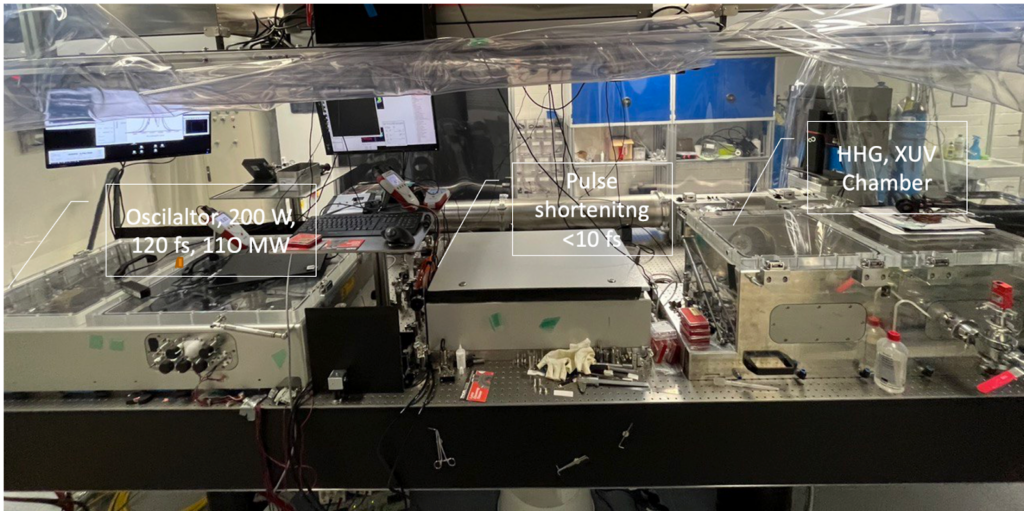Problem: no narrowband continuous wavelength lasers are available for precision spectroscopy in the wavelength range below 190 nm.
Solution: let’s just develop it in our laboratory. Not only a proof-of-principle demonstration, something usable, stable, and working on a daily basis.
Motivation: Is there any new physics out there? Of course, for example, what is dark matter, can we detect it, and how? One intriguing approach to detecting dark matter involves the development of precise and sensitive nuclear clocks.
Here we are setting up the light source for performing precise spectroscopy in the extreme ultraviolet range. One of the interesting transitions is the Thorium isotope (229Th) transition, which plays a crucial role in nuclear clocks [1]. The extreme ultraviolet (XUV) light source is envisioned to be used for many other applications in fundamental spectroscopy covering many other transitions such as 1S-2S in He+ [2]. The XUV source is based on the world’s highest peak power oscillator delivering 200 W average power, 14 MHz repetition rate, and 110 MW peak power with 120 fs pulse duration developed by Semyon Goncharov (see picture below) [3]. This output is being spectrally broadened and compressed in the cascaded multipass cells down to 10 fs increasing peak power to nearly 1 GW. The XUV generation will be performed using high harmonic generation in a gas jet. The picture of the experimental setup is shown below.
We stay optimistic about the progress and hope to get the first high harmonic generation in 2023 and prove that we have an XUV frequency comb in 2024.
If you are as excited about this project as we are, then feel free to join us, let’s improve this world with a cool XUV frequency comb together!

Experimental setup (August 2023). Everything has been built from scratch, including the laboratory. The project started in 2019.

Semyon (left) is happy he built such a powerful oscillator. Yasmin (middle) is looking forward to perform CEP stabilization and the generation of a XUV frequency comb. Moinuddin (right) is excited to join this project as a PhD student.
References